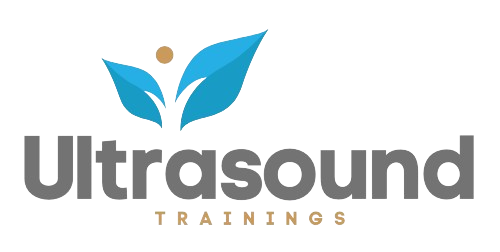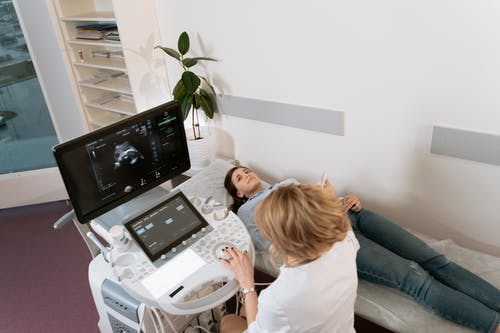Ultrasound technology is one of the most versatile and widely used imaging techniques in modern healthcare. It plays a critical role in diagnosing and monitoring a wide range of conditions, from prenatal care to musculoskeletal injuries. However, the effectiveness of ultrasound largely depends on the type of ultrasound machine being used. With various models designed for different purposes, it’s essential for healthcare professionals to understand the different types of ultrasound machines, their capabilities, and how to choose the right one for their practice.
In this comprehensive guide, we’ll walk you through the key ultrasound machine types, their uses, and what professionals should be familiar with when selecting and using these devices.
Types of Ultrasound Machines
Ultrasound machines vary in terms of features, size, functionality, and intended use. While all ultrasound machines share the same basic principle—using high-frequency sound waves to create images of internal body structures—the way they are used can differ significantly based on the clinical setting and specific diagnostic needs. Here are the most common types of ultrasound machines:
1. Console Ultrasound Machines
Overview:
Console ultrasound machines are the most advanced and comprehensive ultrasound systems, typically found in hospitals, imaging centers, and larger healthcare facilities. These machines are powerful, feature-rich, and designed for a wide range of imaging applications. They are typically larger in size and include a console for controlling settings and a large screen for viewing images.
Uses:
- General imaging (abdomen, pelvis, heart)
- Obstetrics and gynecology (OB/GYN)
- Cardiology (echocardiography)
- Musculoskeletal imaging
- Vascular ultrasound
Key Features:
- High-resolution imaging
- Advanced Doppler capabilities
- Multiple probes (linear, convex, phased array) for different applications
- 3D/4D imaging capabilities for certain specialties
- Often includes the ability to connect to PACS (Picture Archiving and Communication System) for image storage and sharing
What Professionals Should Know:
- Console systems require significant training and expertise to operate effectively, particularly in complex imaging areas like echocardiography.
- Professionals should be familiar with the machine’s customizable settings to optimize image quality depending on the body area being examined.
- Regular maintenance is required to ensure high performance and longevity.
2. Portable Ultrasound Machines
Overview:
Portable ultrasound machines are compact, lightweight, and designed for mobility. They are perfect for point-of-care settings, emergency departments, ambulatory clinics, and home visits. Portable ultrasounds offer convenience without sacrificing diagnostic quality, making them increasingly popular in various clinical environments.
Uses:
- Point-of-care ultrasound (POCUS) in emergency settings or urgent care
- Obstetrics and gynecology (during home visits or field settings)
- Musculoskeletal and vascular imaging
- Bedside imaging for critically ill patients
- Sports medicine and athletic facilities
Key Features:
- Small, compact, and easy to move
- Battery-powered for use in remote locations or emergency situations
- User-friendly interfaces with touchscreens
- Limited by fewer imaging options (compared to console systems)
- Some portable models can perform 3D imaging or Doppler studies, though they may lack the high-resolution features of larger systems
What Professionals Should Know:
- While portable ultrasound machines are less complex, it’s crucial for users to understand their limitations, such as lower image resolution or fewer features.
- The portability and ease of use make these machines ideal for quick assessments and basic diagnostic procedures, but they might not be suitable for comprehensive diagnostic needs.
- Users should be familiar with how to adjust settings for optimal imaging, as portable units may require manual tuning in different clinical scenarios.
3. Handheld Ultrasound Machines
Overview:
Handheld ultrasound devices are the smallest type of ultrasound machines. These compact units can fit in the palm of your hand, making them incredibly portable. Handheld ultrasounds are designed for basic, on-the-go imaging and are often used for quick assessments in primary care, emergency medicine, and fieldwork.
Uses:
- Basic point-of-care ultrasound in primary care or emergency settings
- Early pregnancy evaluations
- Assessing basic musculoskeletal injuries or abdominal pain
- Used for pre-screening or triage purposes
Key Features:
- Extremely portable, typically weighing only a few pounds
- Wireless capabilities to connect to smartphones or tablets for viewing images
- Basic imaging capabilities, including 2D imaging and simple Doppler functionality
- Lower cost compared to larger ultrasound systems
What Professionals Should Know:
- While convenient, handheld ultrasounds typically have limited imaging power compared to console or portable machines.
- They are ideal for rapid assessment but may not offer the high-resolution or advanced imaging required for more complex cases.
- Healthcare professionals should be trained to operate these devices efficiently, maximizing their effectiveness in fast-paced clinical environments.
4. 3D/4D Ultrasound Machines
Overview:
3D and 4D ultrasound machines are specialized systems used to capture three-dimensional images and, in the case of 4D, real-time imaging. These machines are most commonly used in obstetrics and gynecology for prenatal imaging, but they also have applications in other fields like cardiology and musculoskeletal imaging.
Uses:
- Prenatal imaging to provide detailed views of the fetus
- 3D and 4D echocardiography for examining heart structure
- Musculoskeletal imaging to visualize soft tissues, tendons, and ligaments
- Planning for surgical interventions or reconstructive procedures
Key Features:
- 3D imaging provides detailed views of organs and structures in three dimensions
- 4D ultrasound adds real-time motion to the 3D images, such as viewing the fetus moving or the heart beating
- High-resolution imaging for more detailed anatomical visualization
- Specially designed probes and software for rendering 3D/4D images
What Professionals Should Know:
- 3D/4D ultrasounds require specialized training, as the technology can be more challenging to operate compared to standard 2D systems.
- The images produced by 3D/4D machines require careful interpretation and are often used for specific diagnostic or patient education purposes.
- The technology is often used in high-risk obstetric cases, but its application is expanding into other specialties as well.
Choosing the Right Ultrasound Machine
Choosing the right ultrasound machine depends on several factors, including the clinical environment, the intended use, the budget, and the specific needs of the healthcare provider or practice. Here are some tips for selecting the best machine for your needs:
- Consider the Specialization: If you are focused on obstetrics, a machine with 3D/4D capabilities may be essential. For musculoskeletal imaging, a high-frequency linear probe may be ideal.
- Evaluate Portability: If you work in emergency care or need to move from patient to patient frequently, a portable or handheld ultrasound may be more practical.
- Assess Image Quality: For more detailed imaging, particularly for cardiovascular or complex diagnostic procedures, a console system may be necessary. For quick assessments, a portable unit may suffice.
- Look at Budget and Training: Some ultrasound systems are more affordable than others, but they may have fewer features. Make sure the machine fits your budget while still meeting the clinical needs of your practice. Additionally, ensure that you or your staff are trained to operate the device effectively.
Conclusion
Ultrasound technology is a powerful and versatile diagnostic tool used across a wide range of medical specialties. Understanding the different types of ultrasound machines and their capabilities can help healthcare professionals make informed decisions about which equipment is best suited for their practice. From large console systems to compact handheld devices, each type of ultrasound machine has unique advantages depending on the clinical needs and setting.
For healthcare professionals seeking to improve their ultrasound skills, or for those considering adding ultrasound to their practice, proper training and knowledge of available equipment are essential. If you’re looking to enhance your ultrasound capabilities, Ultrasound Trainings offers comprehensive training courses to help you master ultrasound technology and improve patient care. Contact us today to learn more about how our programs can benefit your practice!


